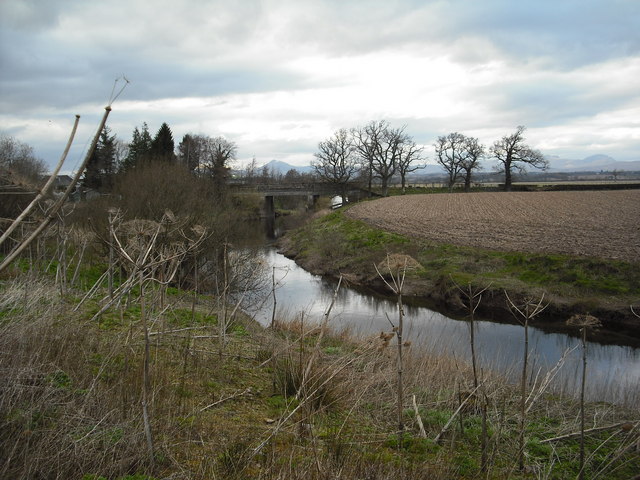47 km
River Forth
The River Forth is a major river in central Scotland, 47 km long, which drains into the North Sea on the east coast of the country. Its drainage basin covers much of Stirlingshire in Scotland's Central Belt. The Gaelic name for the upper reach of the river, above Stirling, is Abhainn Dubh, meaning "black river".
Location
About
Scotland is a country that is blessed with a stunning natural beauty that is unrivaled anywhere in the world. One of the many jewels in Scotland's crown is the River Forth, a majestic river that flows through the heart of Scotland. The River Forth is a popular tourist destination, attracting millions of visitors every year. In this article, we will explore the River Forth from a tourist perspective, examining its history, geography, and the various activities that tourists can enjoy.
The River Forth is a large river that runs through central Scotland. It begins in the Trossachs National Park, a scenic region known for its picturesque landscape, and then flows eastwards until it empties into the North Sea. The river is approximately 47 miles long and varies in width from 1 mile to 2.5 miles. It is one of Scotland's most important waterways and has played a significant role in the country's history.
The River Forth is a beautiful river that offers tourists a wide range of activities. One of the most popular activities is fishing. The river is home to a wide range of fish, including salmon, trout, and pike. Fishing is allowed in many areas along the river, but visitors are required to have a valid fishing permit.
Another popular activity is kayaking. The River Forth is perfect for kayaking, offering visitors the chance to explore the river's many beautiful sights and sounds. There are many guided kayaking tours available, which are suitable for all skill levels, including beginners. Visitors can also rent kayaks and explore the river at their own pace.
For those who prefer to stay on land, there are many walking and cycling trails that run along the River Forth. The Forth Valley Cycle Path is a popular cycling trail that runs from Stirling to Alloa, offering visitors stunning views of the river and the surrounding countryside. There are also many walking trails that run along the river, including the John Muir Way, a long-distance walking trail that runs from Helensburgh to Dunbar.
The River Forth is also home to many historic landmarks and attractions. The Forth Bridge, a UNESCO World Heritage Site, is one of Scotland's most famous landmarks. The bridge spans the River Forth and connects Edinburgh and Fife. Visitors can take a guided tour of the bridge, which offers stunning views of the river and the surrounding landscape.
The town of Stirling is another popular tourist destination. Located on the banks of the River Forth, Stirling is home to many historic landmarks, including Stirling Castle and the Wallace Monument. Both attractions offer visitors a fascinating insight into Scotland's history and heritage.
In conclusion, the River Forth is a beautiful river that offers visitors a wide range of activities and attractions. Whether you're interested in fishing, kayaking, walking, cycling, or exploring Scotland's history and heritage, the River Forth has something for everyone. So, if you're planning a trip to Scotland, make sure to add the River Forth to your itinerary. You won't be disappointed.
Things to do nearby
Scotland's River Forth is a majestic waterway that flows through some of the country's most picturesque landscapes. From the towering Forth Bridge to the charming towns and villages dotted along its banks, there are plenty of places and things to do nearby River Forth that are sure to delight any tourist.
One of the most iconic sights on the River Forth is the Forth Bridge. This UNESCO World Heritage Site is an engineering marvel that spans the river and connects the towns of North and South Queensferry. Visitors can take a boat tour of the bridge or explore it on foot via a specially designed walkway that offers stunning views of the surrounding landscape.
Another must-see attraction on the River Forth is the historic town of Stirling. This ancient city is home to Stirling Castle, a stunning fortress that has played a pivotal role in Scotland's history. Visitors can explore the castle's battlements and learn about the various battles that have been fought on its grounds. The town of Stirling itself is also full of charm, with cobbled streets, quaint shops, and a thriving arts and culture scene.
For those looking for a more adventurous experience, the River Forth offers plenty of opportunities for outdoor activities. Kayaking and canoeing are popular options, as are fishing and hiking along the river's banks. There are also several golf courses in the area, including the prestigious Gleneagles Golf Course, which has hosted several major tournaments.
Foodies will also love exploring the River Forth region, which is known for its delicious local cuisine. From fresh seafood to hearty stews and baked goods, there is something for everyone to enjoy. Visitors can sample local specialties at one of the many restaurants and cafes in the area or visit one of the many farmers' markets to try fresh, locally sourced produce.
Finally, no visit to the River Forth region would be complete without taking a cruise along the river itself. Several companies offer boat tours that take visitors on a journey through the heart of Scotland's stunning countryside, with opportunities to spot wildlife, see historic landmarks, and soak up the natural beauty of the region.
In conclusion, the River Forth region offers a wealth of experiences for tourists looking to explore the best of Scotland. From historic landmarks to outdoor adventures, delicious cuisine, and stunning scenery, there is something for everyone to enjoy. Whether you're looking for a relaxing getaway or an action-packed adventure, the River Forth region is a must-visit destination for any tourist.
